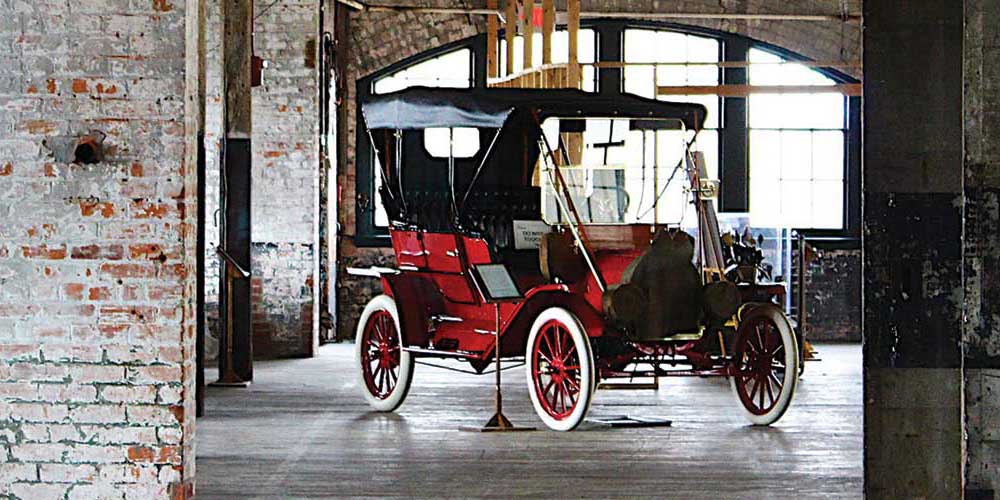by A. Wayne Ferens
Photos from the A. Wayne Ferens Collection
Published 6.19.2019
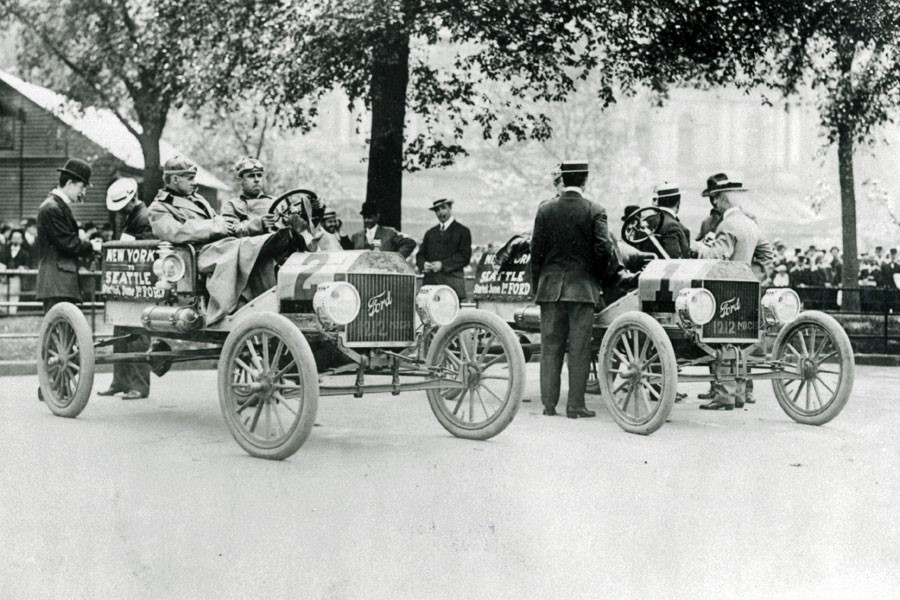 Cars mustering in New York City for the Ocean to Ocean race in 1909 (Ferens Collection)
Cars mustering in New York City for the Ocean to Ocean race in 1909 (Ferens Collection)
In the Spring of 1909, Robert Guggenheim, who made a fortune in the mining industry, decided to offer a prize to the automobile that could drive the fastest from New York to Seattle in what he called an "Ocean to Ocean Automobile Endurance Contest." His intention was to use the automobile industry as part of a publicity campaign to advertise the need for a national highway across the continent and to promote the Alaska-Yukon-Pacific Exposition opening June 1, 1909. Thirty-five automobiles were entered in the event, but by the time the contest was set to begin, only six appeared on the New York starting line, two of which were Fords.
Ford No.1 and Ford No. 2, named in the order of their entry, were Henry's new Model Ts that were essentially stock production cars weighing in at 950 pounds and powered by the standard 20 horsepower 4-cylinder engine. Ford felt he had the advantage with the new lighter, stronger Model T compared to the larger and more powerful cars entered in the competition. At 3:03 p.m. on June 1 in front of a crowd of over 20,000 people, the two Model Ts, an Acme, an Itala, a Shawmut and a Stearns began their race to Seattle. President William Howard Taft gave the starting signal from the White House.
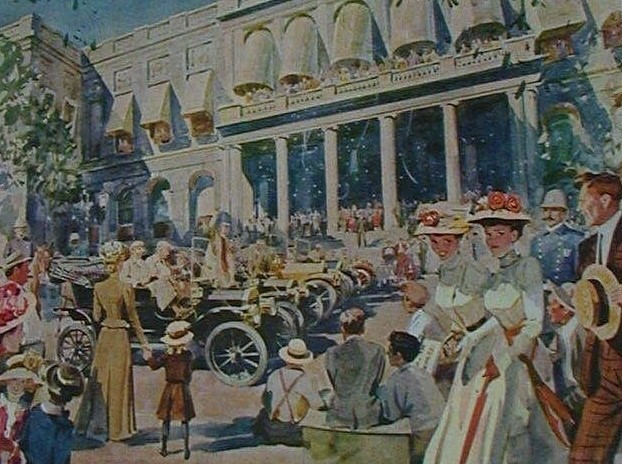 A painting that depicts the start of the Ocean to Ocean race (Ferens Collection)
A painting that depicts the start of the Ocean to Ocean race (Ferens Collection)
While crossing Missouri and into the plains of Kansas, heavy rains turned the country roads into seas of mud. In Colorado, conditions were so bad that average speeds rarely exceeded 10 miles per hour. In Cheyenne, Wyoming, the big heavy Itala couldn't go on and dropped out of the race. Near the summit of the Cascades, the drivers encountered strong winds and heavy snow drifts. Several days later, arriving at the finish line in Seattle at the Drumheller Fountain was Ford No. 2 crewed by James Smith and Bert Scott, followed 17 hours later by the Shawmut.
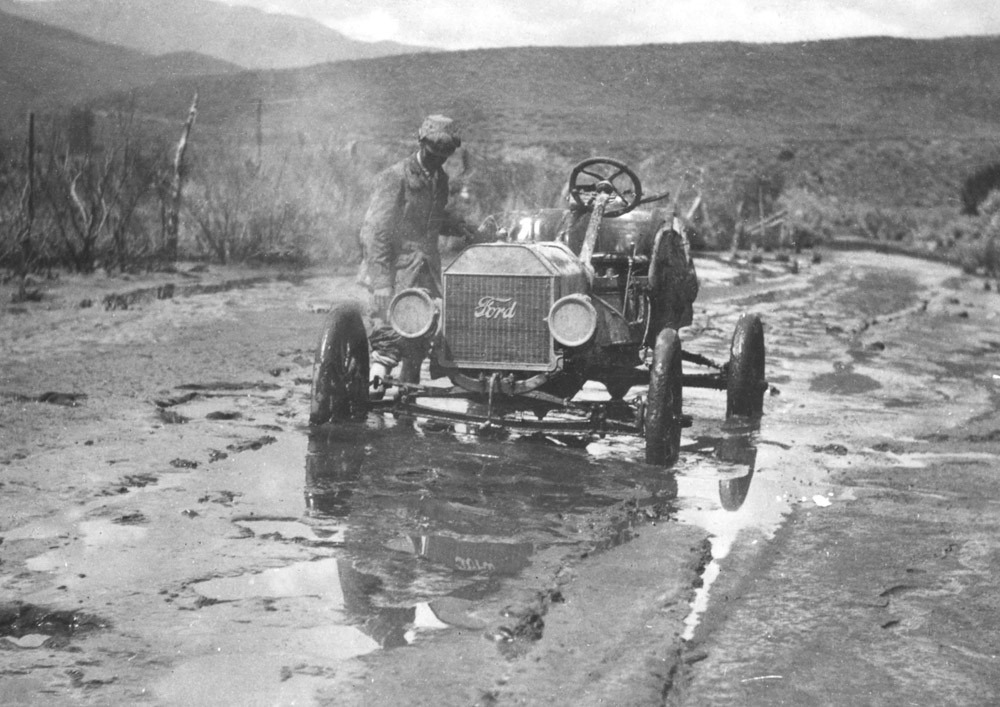 One of the Fords deals with poor roads during the race (Ferens Collection)
One of the Fords deals with poor roads during the race (Ferens Collection)
Soon after the race, Ford Motor Company used the No. 2 Model T winner for publicity showing the car at various auto shows and exhibits around the country. Five months later victory reverted to the Shawmut when it was discovered that Smith and Scott had changed out No.2's engine along the way.
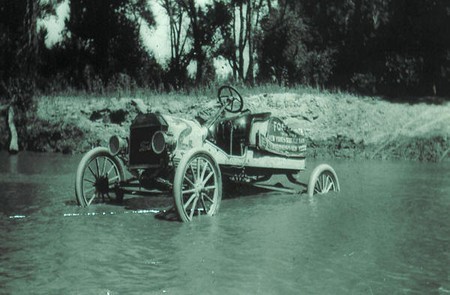 Ford Model T No. 2 crosses a stream (Ferens Collection)
Ford Model T No. 2 crosses a stream (Ferens Collection)
In the end, Henry Ford had to give up the Guggenheim Trophy because of a technicality. Today, one can only imagine what it must have been like to drive across the United States over dirt and muddy roads, snow covered mountains, and fields and streams -- passing through more than 400 communities between New York and Seattle.
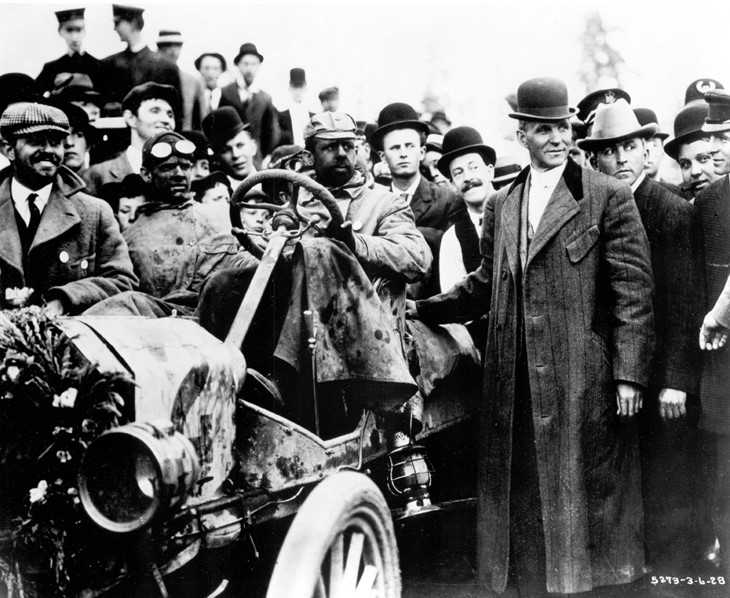 Henry Ford greets the Model T No. 2 as it finishes the race in Seattle (Ferens Collection)
Henry Ford greets the Model T No. 2 as it finishes the race in Seattle (Ferens Collection)
For James Smith and Bert Scott, who were greeted by Henry Ford at the finish at precisely 12:55:25 p.m. on June 22, 1909 at the A-Y-P Expo, and asked how they felt winning the first 4,106-mile transcontinental auto contest, they replied: "Exhausted!"
Bibliography
Story of the Race: Told by one of the crew. New York Times, June 19, 1909.


